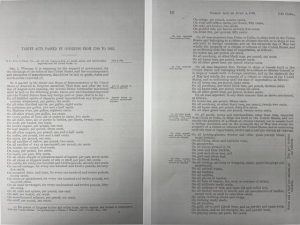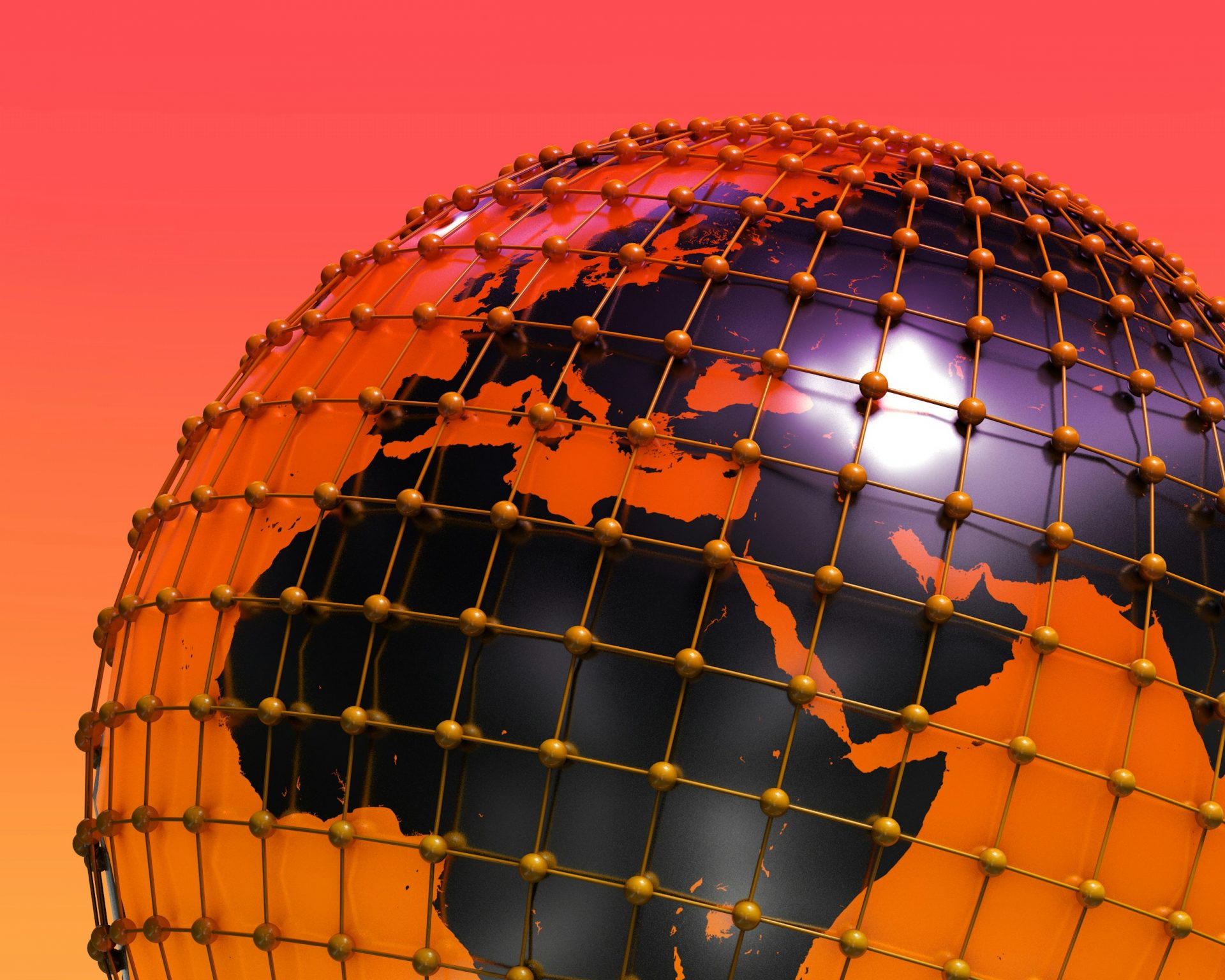Towards a Modular Globalization
We live in a world marked by profound challenges and changes. To be a part of this wave, we must be properly prepared. However, the leadership of many countries does not understand these aspects and thus, in addition to the astonishing proportion of political blunders, there is also a misunderstanding of the extremely dynamic pace of the global, economic, political, geostrategic and technological changes. Such misunderstandings, unfortunately, lead to non-adaptation and loss of competitive advantages, with a direct impact on the stability and even on the general development of various areas, affecting large masses of population across the globe.
The Munich Security Report 2025, recently released on February 10, raises to the debate and analyzes, what seems to define the coming years: multipolarization. This notion describes “both a global shift of power to a larger number of actors around the world as well as increasing polarization on the international and domestic levels”. This report also highlights that “there are different views about what a future order should look like, both among the key actors but also within them”.
Many thought, business, economic and political leaders are saying that we should start to understand the shifts of the new world order with America’s new policies under Trump administration. The situation is – from my point of view – much more complex, but the United States, being the major economy in the world and the country which engaged the most on the global stage, we must – with a first rank priority – discuss its actual positioning.

President Trump’s new visions and policies didn’t emerge during last year’s rallies or in January 2025, but they were emphasized in his first presidency’s Inaugural Address, on the 20th of January 2017: “we’ve made other countries rich while the wealth, strength, and confidence of our country has disappeared over the horizon”. This is the starting point of the tariffs-based economic approach and of the hard line of his policies. At the same time, it represents the root of ambiguous orientations of some decision-makers in many other countries, and it also reflects the sap that fed the complaints of very large numbers of Americans, but also of citizens from different corners of the world, resulting in radical decisions and movements in many countries.
The pandemic and the tense global situation due to wars like that from Ukraine and Gaza strip, the problems of the African continent, the migration issue, the economic uncertainty and the inequality reality, amplified across the globe the sense of nationalism. The electorate in many countries began to feel fed up with the classic ways of doing politics, an aspect that President Trump – starting from his 2017 statement – capitalized to the full, generating the most spectacular comeback in the American political history. But this comeback came with an even harder line of public policies.
The global stage will be shaken by the new visions promoted by President Trump, as the 47th President of the US. There are two major pillars: (a) the economies from all over the world will have to compose poems (policies) with the most beautiful word from the dictionary: tariff and (b) the international organizations will have to adapt to the new selective engagement of the US.
Tariffs: Collision, Competition, Cooperation, Coexistence
Professor Hironori Asakura, in his 2003 famous book “World History of the Customs and Tariff” analyzes the evolution of tariffs across the globe starting with the Mesopotamian era until recent times. Nowadays we all know very well how the post-world war international economic relations ascended, how the GATT appeared and how the WTO was formed, how China became a member of the WTO in 2001, how the international trade and the global economic development evolved.
Many decision makers from both public and private sector consider that Trump’s tariff policy will be no more than an involution (towards 19th century model) of the international stability and development. Major countries or economic areas affected by such tariffs will react, under one form or another, especially if there will be applied the reciprocal tariff plan as President Trump’s actions suggested on the 13th of February.
The first and most important will be China. Today, Beijing seems much more prepared to retaliate in case of tariff escalation than it was in 2017-2018. There will be a collision between these two huge economic tectonic plates. And the global economy will be affected as well, but this non-military clash will be defined by fluid barriers and favors, a mix of hard and soft exercises of power, changing its structure and proportions depending on particular strategic interests of the two superpowers and of course, on negotiation.
At the second place I would mention the European Union. Unfortunately, the slow-motion style of taking decisions in Brussels affected already the competitiveness of the EU across the globe. For the EU, there will be very difficult to find and implement the swift, prompt and adequate answers in case of new tariffs imposed by Trump administration. And Brussels also must face the rising nationalist, radical and extremist political currents in many European countries, which will make more difficult the process of constructing the effective answers. From being the closest and inseparable partners, the US and EU could enter into a status of (sometimes friendly) competition. On the other hand, I strongly believe that Europe and the EU are the best examples of integration, of unity within diversity, of prosperity through peace, of non-tariff based economy in the human history and we also successfully experienced during times Joseph Schumpeter’s concept of creative destruction, which was reinforced by the 2024 Noble Prize in Economic Sciences laureates, Daron Acemoglu and James A. Robinson, in their crucial book “Why Nations Fail”.

We must take a look at US’s neighbors too: Canada and Mexico. For these countries, there is very difficult to understand the possible economic situation that they will have to manage. America’s neighbors do very well understand the border and migration issues but the deep economic ties with the US make them vulnerable to tariff-based policies and I estimate that the US will also abruptly and negatively be affected.
Last but not least, we must also look at other BRICS countries and generally, to the Global South. Countries and economic areas from this group have growing economies and they are having a positive demographic evolution. And President Trump knows this very well. As a consequence, his administration will rather have a very selective and short-term set of policies related to this group of countries, many of them being also possible partners for US in niche areas like the rare-metals businesses or energy, others representing possible competitors related to US economic and security interests. There will be as I call, a selective cooperation.
When analyzing the disengagement of the United Stated from different international organizations or multilateral treaties, it is obvious that Make America Great Again vision will not mean that America is simply going home, but rather that the Trump administration will approach the search of more benefits for America. But there will certainly be some chilly winds coming up. As examples, the new administration required of NATO members to contribute more for this organization and to allocate 5% of GDP to defense sector, the World Health Organization could face serious troubles with no American membership, ASEAN could swing back and forth, especially the economic policies, between the US and the non-ASEAN states like China, Japan and India, the African Union could develop a closer strategic partnership with China and Russia, and the Global South will prominently advocate for an upgraded and reformed United Nations Organization and an upgraded basic structure of the international financial organizations, especially the Bretton Woods ones.

I estimate that President Trump does not really want the USA to leave its global presence, but in the exchange of the high tariffs, he will offer access into the US market and he will also provide, in a consciousness but non-spoken manner, global geopolitical and geo-economic space for other emerging powers, like China, India, possible Russia. This will lead to coexistence.
Modular Globalization
Following such possible evolution, the multipolarization scenario will come to a closer reality. The globalization will have a new architecture. I do not foresee neither a single-state based order nor a bi-polar global stage, or a decoupled world, but I appreciate that there will be – as I call – a modular globalization, each module having one or two lead-countries, with modules intersecting themselves in certain areas of interests, while diverging in others.
Such MAGA hard policies promoted by the actual Trump administration and the peace talks which will follow the wars that we faced in the world during the last years, will possibly lead to a new type of Westphalian peace. Economic interests will be negotiated by nations in conjunction with the module of interests that they are part of, security issues will be on a rising line of concerns for governments and the international organizations will slowly adapt new organizational charts, new drivers of functionality and new structures representing deeper the modular globalization. And this all means a different landscape of the status that we are all accustomed to, a new reality that we will have to manage and to navigate through.
This article was authored by Ciprian-Dan Costea, Vice Chairman, Autonova




